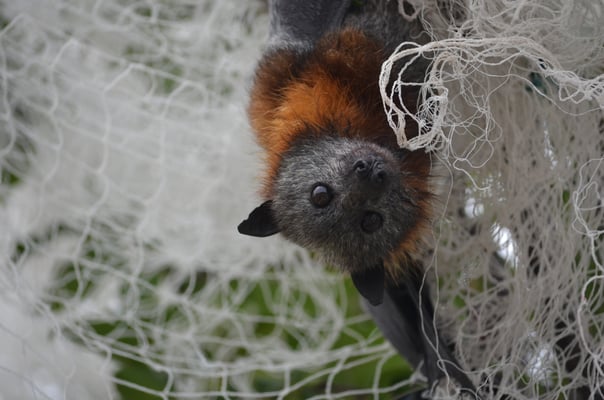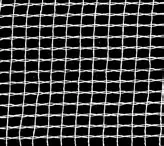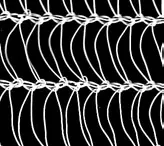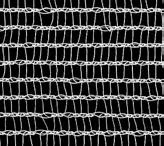wildlife friendly
netting
- Home
- What We Do
- Wildlife Information
- General Information
- Wildlife Friendly Netting
Fatal attraction
Native animals, increasingly displaced from their natural habitat by tree clearing and extreme weather, are resorting to flowering and fruiting trees in our gardens.
Tree netting is a popular way to protect fruit from wildlife, particularly in urban areas, but the wrong type of netting can be deadly. Hungry animals are easily caught in ‘bird netting’, which has a mesh size greater than 1cm square. Wildlife friendly netting should have a mesh size of less than 5 mm.
The rescue statistics show that most animals die with horrific injuries or require long term care before release.
Tragic tangles
Birds, bats, lizards, snakes and the occasional possum are the main victims of inappropriate netting. Animals become tangled in large mesh netting and cannot free themselves. While struggling to escape, the net cuts ever deeper into the animal.
Net disposal
Like ghostnets in the ocean, unwanted netting can continue to maim and kill. Ensure that discarded netting cannot become a hazard to wildlife.

Tree netting guide
Here are 2 ways you can protect your backyard fruit and wildlife:
1. Protecting individual fruit.
Search online for ‘fruit protection bags’, look for Green Harvest and The Native Shop for a range of bags and sleeves. Plastic garden pots can also be useful.
2. Protecting the whole tree.
We recommend a densely woven net that will not trap wildlife and doesn’t need a frame, such as the Fruit Saver nets, Hail Guard, Vege Net or Haverford Brands wildlife safe netting. These nets are all available in white - the colour best seen by animals at night.
Please choose netting that you cannot poke your finger through. The mesh size should be less than 5 mm.
For smaller trees up to 13m in circumference, we recommend Fruit Saver nets, available in 2 sizes.
For larger trees, buy Hail Guard off the roll from Fernland Agencies Fernland.com.au, Vege Net in 2 sizes from Greenharvest.com.au and Haverford have a number of great options too.
4 great nets that pass the ‘finger poke test’:
Fruitsaver

2 sizes for small and medium trees
Hail Guard

Off 6 m roll
Vege net

2 sizes, 6m x 10m and 6m x 20m
Haverford

Various sizes and nets available
Helpful Hints
Choose a smaller variety of fruit tree that is easy to protect, prune and harvest
- Use a supporting frame to protect the tree from the weight of the net, and prevent birds pecking fruit through the net
- Consider how you will access your fruit inside the net, Fruit Saver nets have an access flap for this
- The base of the net should be secured to the trunk of the tree or to the ground to prevent wildlife getting inside
- Remove nets promptly after fruiting to prevent damage to new growth
- Check your nets regularly. If an animal is caught visit www.fauna.org.au to find a wildlife carer in your area.
Some hardware stores in Australia have taken the lead and stopped selling netting that is potentially harmful to wildlife. Ask your local supplier to stock only fruit tree netting that passes the ‘finger test’ - netting that you cannot poke your finger through.
For more information
Visit www.wildlifefriendlyfencing.com and look for the link to the netting page. Get up-to-date information including instructional videos showing how to net your trees in a wildlife friendly way.
Information reproduced with permission from Tolga Bat Hospital
15 Ways to Help Wildlife
Sign up to receive our monthly eNewsletter with wildlife rescue stories and updates on our work rescuing, rehabilitating, and releasing native wildlife.
